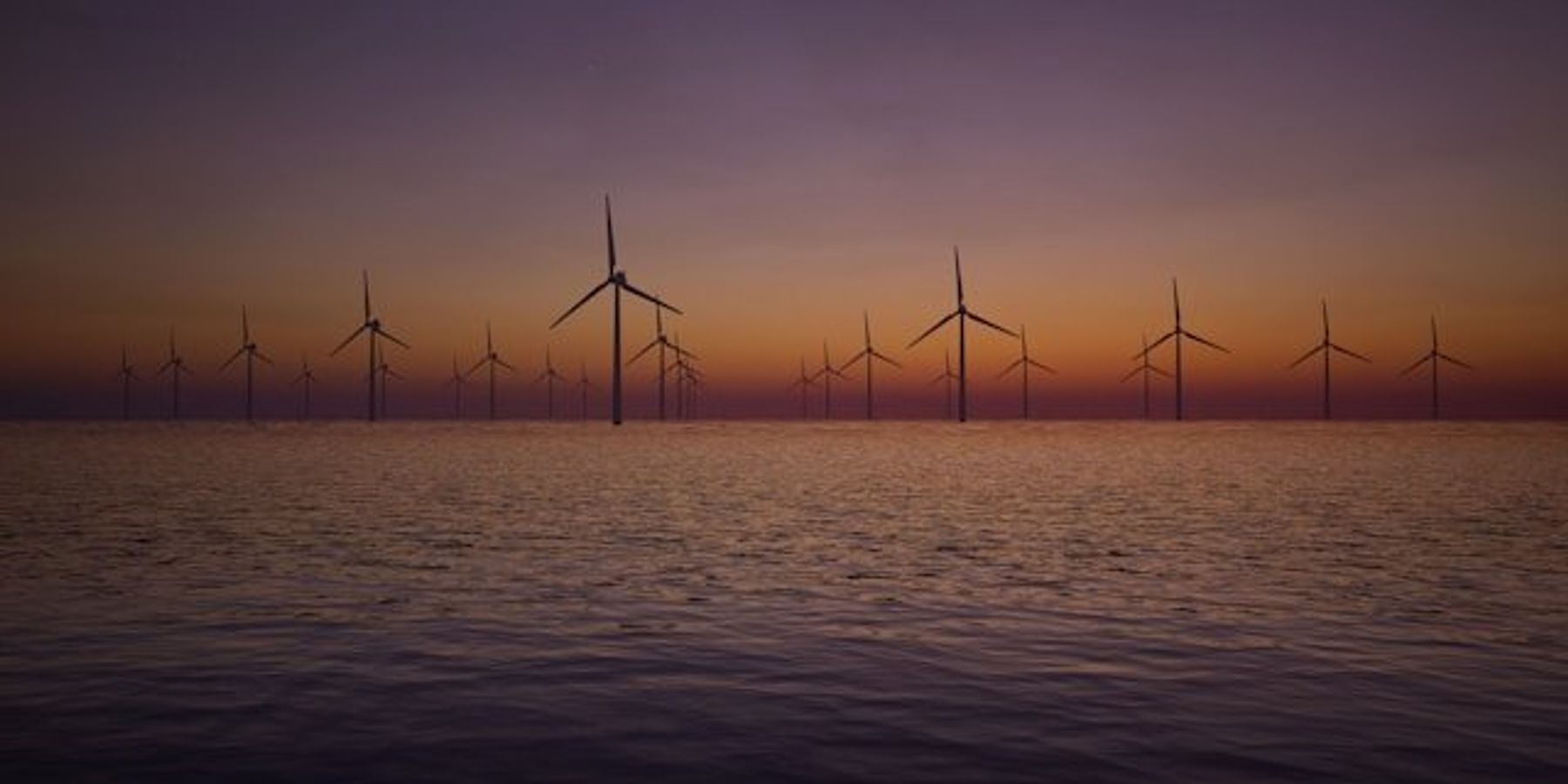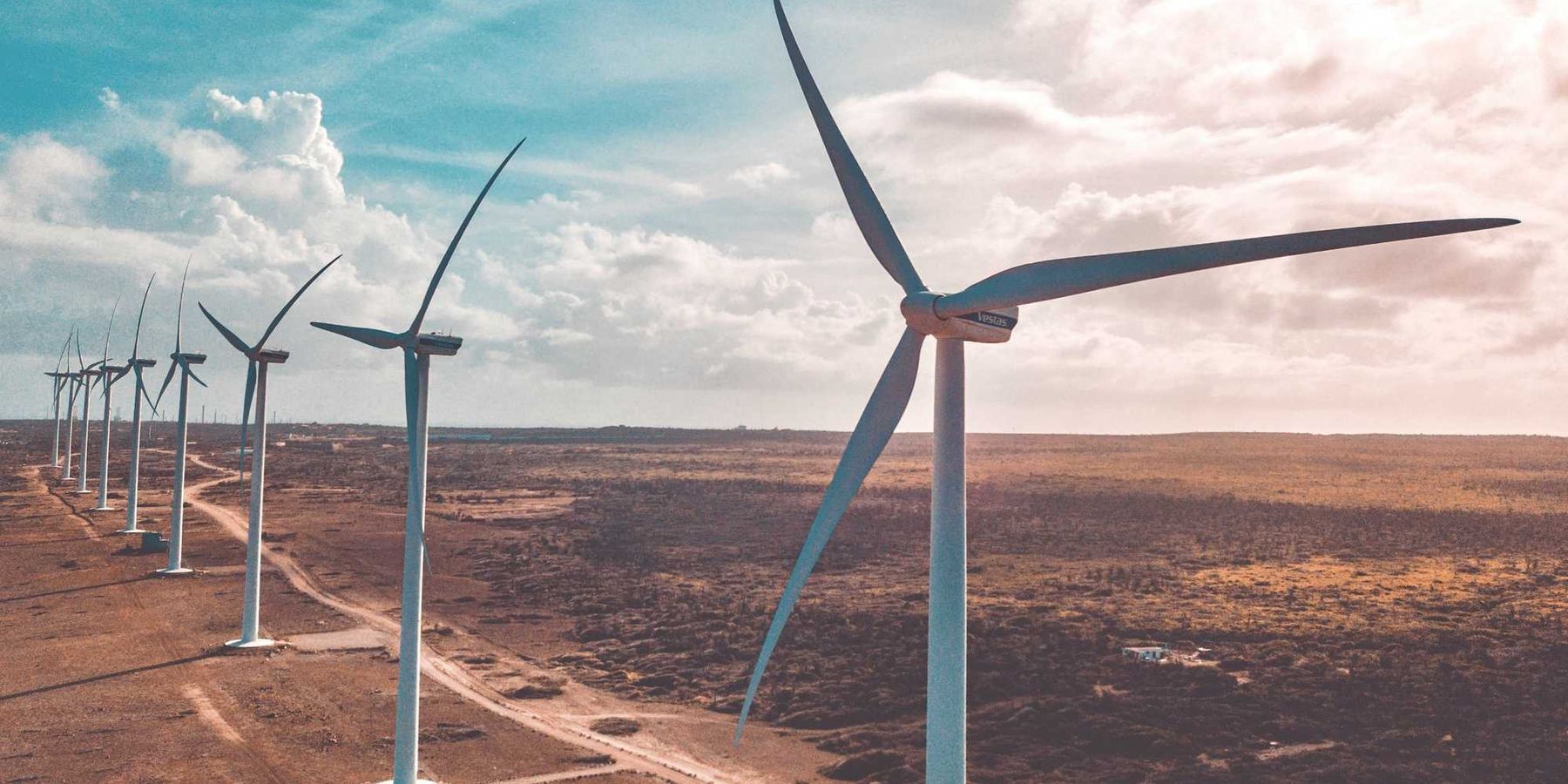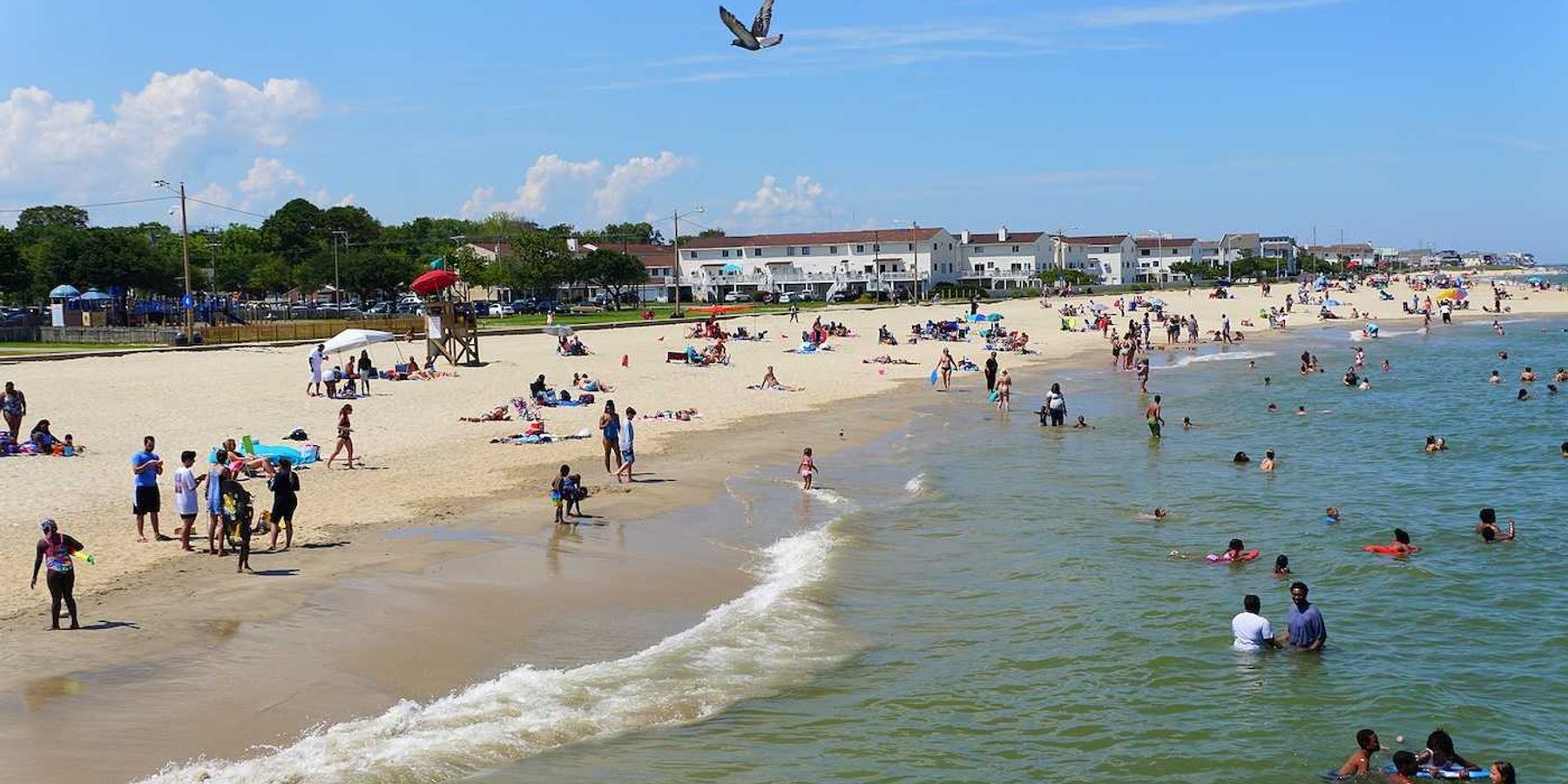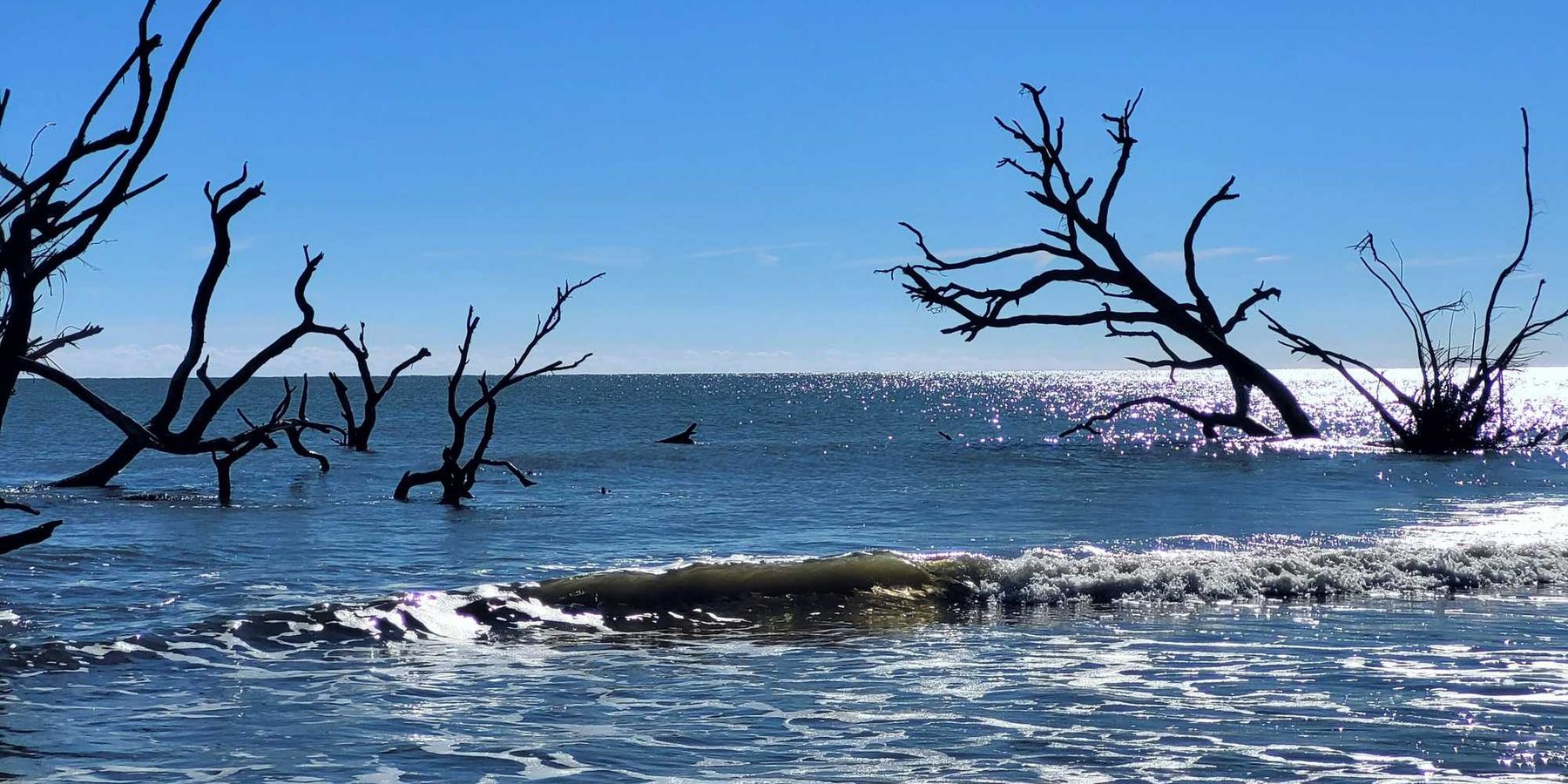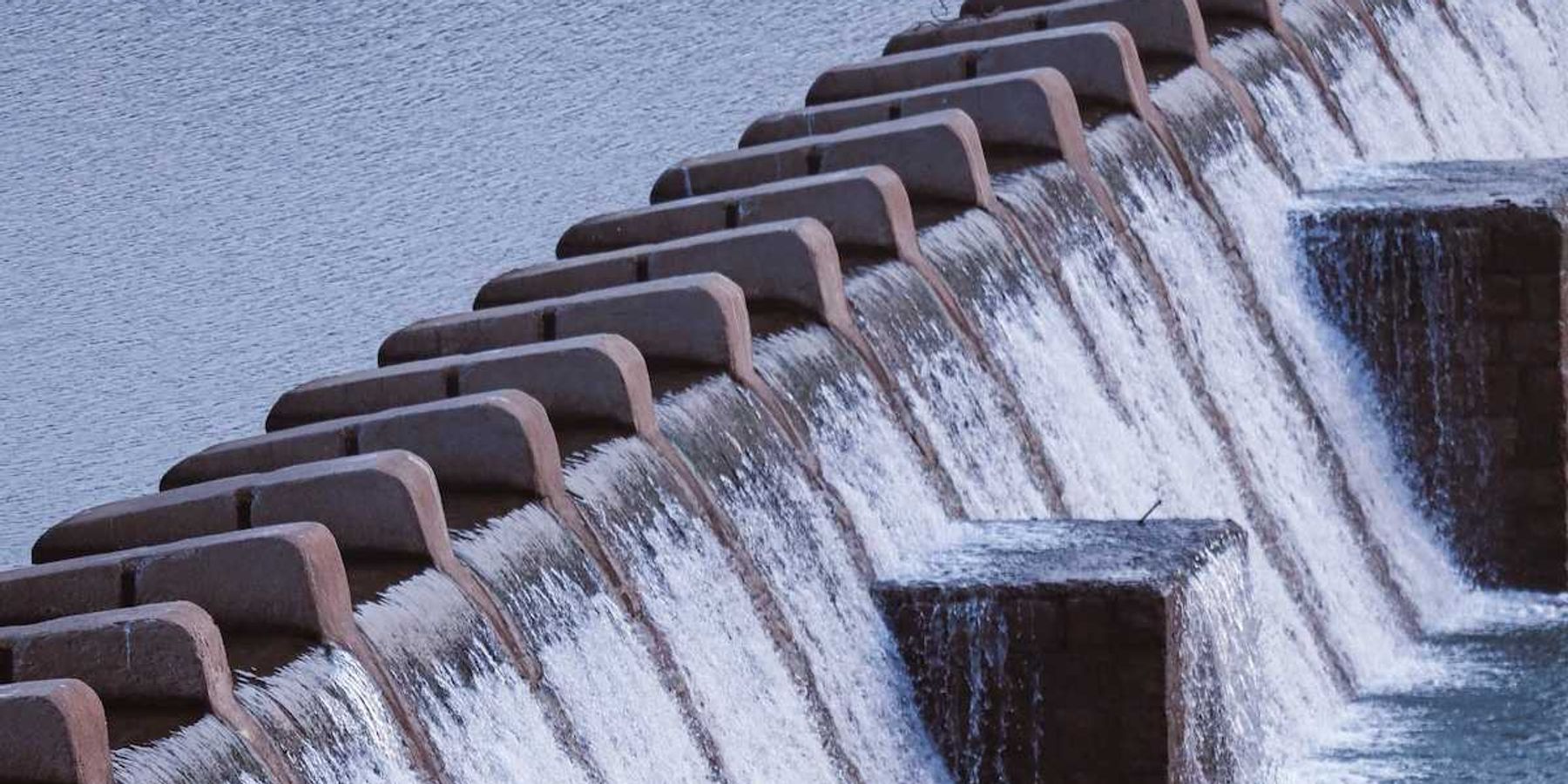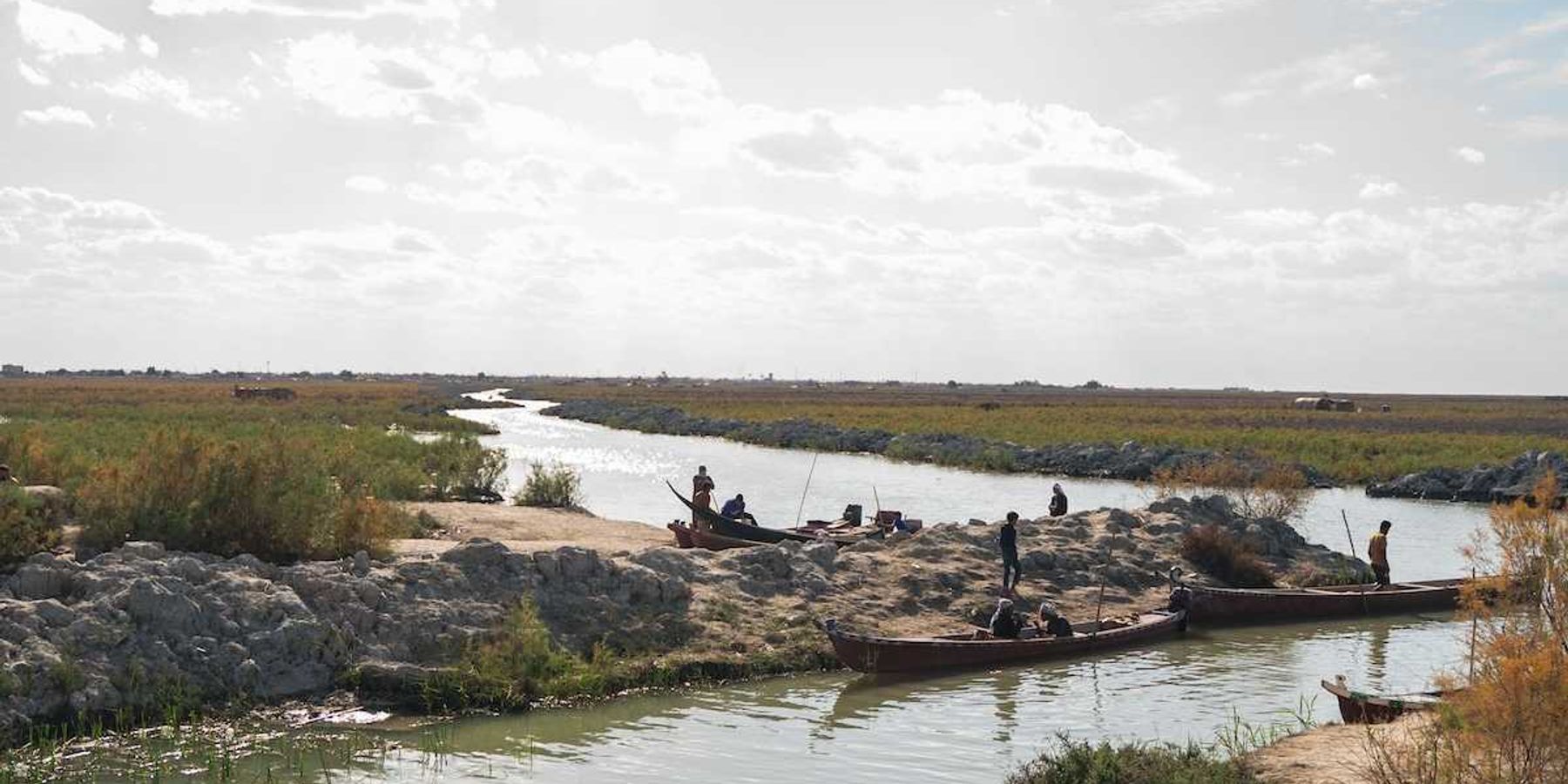
We’re dumping loads of retardant chemicals to fight wildfires. What does it mean for wildlife?
As western wildfires become bigger and more intense, state and federal fire agencies are using more and more aerial fire retardant, prompting concerns over fish kills, aquatic life, and water quality.
As the Caldor Fire roared toward drought-stricken Lake Tahoe in the last days of August, firefighters faced a sobering scenario: Strong winds increased from the southwest, pushing the fire toward populated areas and prompting tens of thousands to flee.
For days aerial crews dropped fire retardant from planes, aiming to slow the fire's progress and lessen the intense heat so that ground crews could approach. But the fire just kept coming — until winds shifted and smoke-clogged Tahoe was spared.
Fire agencies consider aerial wildfire retardants — a mix of water and chemicals — an important tool for protecting communities. The red mist spreading behind an airtanker capable of carrying up to 8,000 gallons of retardant provides reassurance to people worried about their safety, homes, and businesses.
Between 1985 and 2017, the western U.S. has seen an eight-fold increase in annual area burned by severe fires. And aerial wildfire retardant use is way up as well. Between 2000 and 2010, more than 90 million gallons of retardant were applied on Forest Service lands. But in just the eight-year period between 2012 and 2019 — the latest year for which records are available — the Forest Service used more than 102 million gallons.
"With these megafires and just massive amounts of retardant being dumped on the environment, do we really know all of the impacts, both as a fertilizer and as a toxic?" Scott Cooper, a research professor at the University of California Santa Barbara's Department of Ecology, Evolution, and Marine Biology who studies the effects of fire on streams and fish, told EHN.
The primary aerial retardant used in western wildfires is called Phos-Chek, developed by Monsanto in the early 1960s. The Phos-Chek brand belonged to the company until 1997, according to the current manufacturer Perimeter Solutions. Phos-Chek contains about 80% water and 10% ammonium phosphate fertilizer solution that sticks to plants and inhibits combustion. Proprietary ingredients, such as thickening and coloring agents and corrosion inhibitors, make up the remainder of the formula.
Phos-Chek isn't meant to be sprayed directly on a fire. Instead, the aircraft releases retardant in a line outside the fire boundary where it rains down on vegetation in a sticky film. As the fire approaches, its heat causes the retardant to release water vapor, slowing the fire's progress and cooling it so that ground crews can get close enough to battle the blaze. The residue from the retardant sticks to trees, plants, and surface soils until removed by wind or rain.
Wildfire retardants are generally considered safe for humans, though some argue that the risks are insufficiently understood. In addition, scientists began raising concerns decades ago about the toxicity of retardants for wildlife. Sometimes pilots accidentally release retardant over restricted areas like endangered species habitat and waterways in highly concentrated doses. Once it enters streams, ponds, and rivers, retardant — particularly in concentrated quantities — can spur harmful algae blooms, and potentially kill fish, amphibians, and other aquatic organisms.
Collateral contamination from wildfire retardants
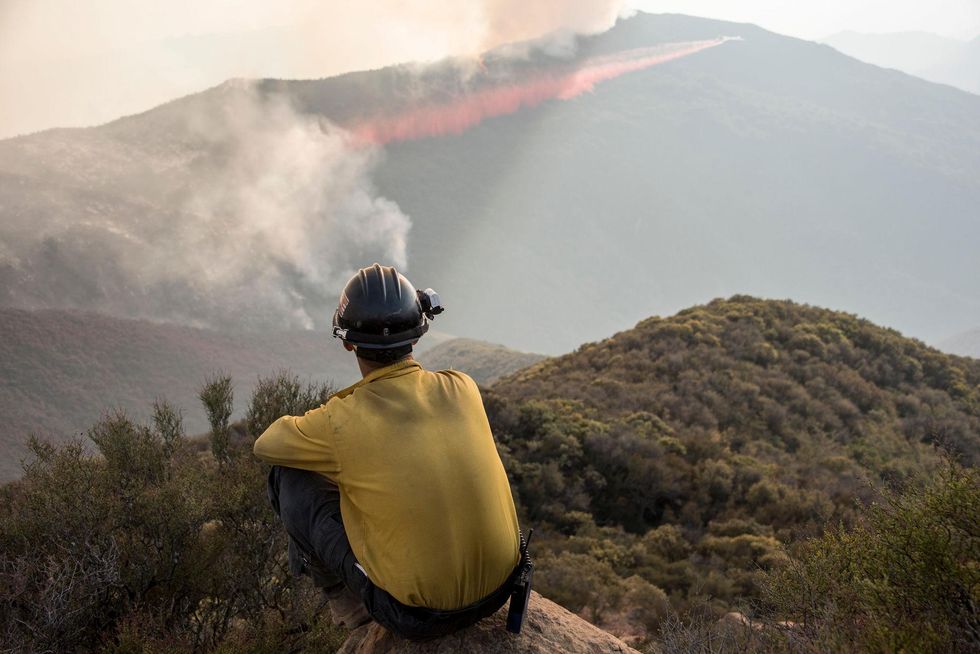
Spraying the Thomas Fire in 2017. In the eight-year period between 2012 and 2019 — the latest year for which records are available — the Forest Service used more than 102 million gallons of wildfire retardants. (Credit: Airman Magazine/flickr)
A series of lawsuits brought by the nonprofit watchdog group Forest Service Employees for Environmental Ethics (FSEEE) starting in 2004 claimed that the Forest Service was violating the Endangered Species Act and the National Environmental Policy Act by not analyzing the environmental impacts of aerial wildfire retardants.
In 2008, a federal judge ordered the Forest Service to avoid retardant use in ecologically sensitive areas. The Forest Service was required to conduct an environmental impact study and consult with the U.S. Fish and Wildlife Service (FWS) and the National Marine Fisheries Service (NMFS) about the retardants' effects on critical habitat.
In 2011, the Forest Service published an environmental impact study concluding that aerial retardant posed minimal risk to most birds and large terrestrial wildlife, like bears and deer, because they are better able to flee fire areas, but presented a higher risk to amphibians, rodents, and insects, and species whose habitat is limited to small geographic areas.
The study also concluded that retardants could adversely affect water quality, especially in small ponds and vernal pools where a lack of flowing water would hinder retardant dilution and lead to excessive nutrient production that causes algal blooms and starves water of oxygen. The study concluded that adverse impacts could linger in these systems for two years or more.
The Forest Service subsequently enacted "exclusion zones" in ecologically sensitive areas where retardant would not be used. It also established a 300-foot buffer when applying retardant around surface water by plane, and a 100-foot buffer for helicopter or fire engine applications.
However, there are exceptions to these buffer requirements when human life and public safety are threatened. And despite restrictions, pilots flying low under challenging conditions along steep mountainsides, often with limited visibility due to smoke, sometimes release retardant into exclusion zones. The Forest Service is now required to report these accidental "intrusions," which amount to dozens every year, although less than 1% of all retardant drops between 2012 and 2019 landed directly in waterways.
Andy Stahl, the executive director of FSEEE, wants fire agencies to shift away from reliance on aerial retardants. Every intrusion into buffers and waterways comes with ecological consequences, he said, particularly in smaller streams.
"If you take 3,000 gallons of retardant and drop it in the Pacific Ocean...the concentration of ammonia in the ocean will be minuscule," Stahl told EHN. "Drop the same 3,000 gallons in a small mountain stream and you could have real problems."
Fish kills, aquatic life impacts, and algae blooms
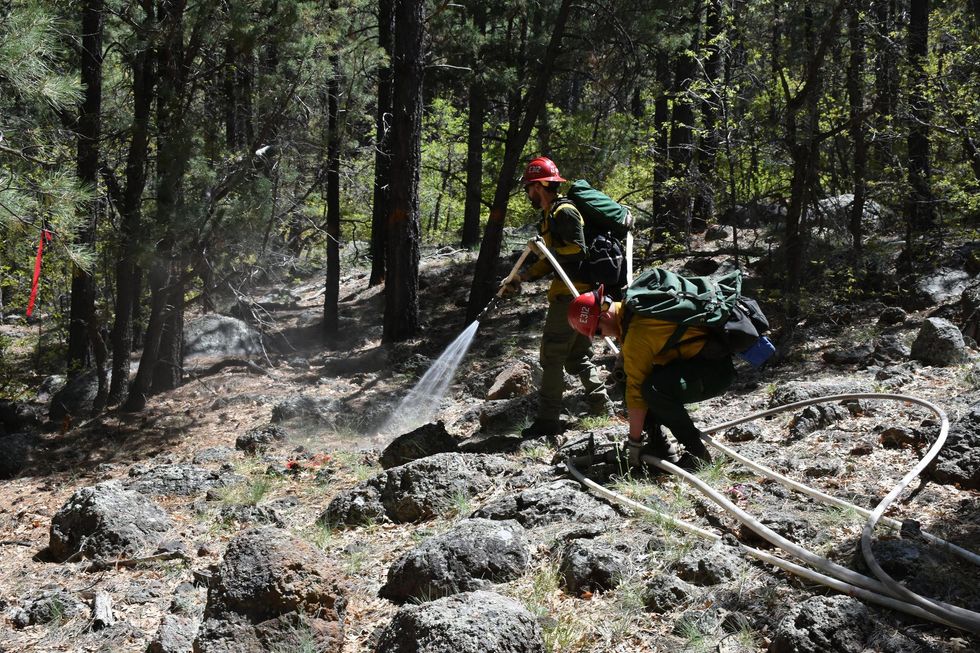
As wildfires approach where retardant has been sprayed, its heat causes the retardant to release water vapor, slowing the fire's progress and cooling it so that ground crews can get close enough to battle the blaze. (Credit: Kaibab National Forest, Arizona/flickr)
Today, the main concern for aquatic life is the ammonia in the fertilizer component of retardants, which damages organs and gills and can hinder reproductive success. Some previous retardant formulations also contained sodium ferrocyanide, which becomes highly toxic when exposed to sunlight. Both have been implicated in fish kills following retardant intrusions in and near streams, prompting the Forest Service to discontinue use of sodium ferrocyanide in 2007.
In 2002, a retardant intrusion into the Fall River, a tributary of the Deschutes River in central Oregon, killed thousands of fish; a 2003 retardant intrusion in New Mexico killed then-endangered Gila trout. In 2009, Cooper measured ammonium levels, a marker of the toxic ammonia that kills fish, that were at least 100 times higher than normal in a creek near Santa Barbara, California, where some 40 endangered steelhead trout were found dead following a nearby retardant drop six days earlier. None of the retardant formulations associated with those fish kills are used today; however, current formulations still contain ammonia.
In 2019, a NMFS biological opinion concluded that while the use of wildland fire retardants was not likely to destroy critical habitat nor jeopardize the existence of threatened and endangered salmon, chum, and steelhead trout, it would "adversely affect" the majority of these species.
The Forest Service maintains a Qualified Products List of retardants, which are approved for use only after ingredients are evaluated for safety and effectiveness by its Wildland Fire Chemical Systems (WFCS) unit.
Risk assessments include a review of toxicity data on individual ingredients. They also entail acute toxicity testing on mammals, which serve as a proxy for humans, and rainbow trout, which serve as a proxy for threatened and endangered fish species. The Qualified Products List sets the standard that state firefighting agencies, like the California Department of Forestry and Fire Protection (Cal Fire), use in deciding which retardant formulations to adopt.
Laboratory studies show that current formulations of Phos-Chek are potentially deadly to rainbow trout. When retardant hits the water, a highly-concentrated ammonia plume develops that can quickly kill fish.
While that plume becomes less lethal as it diffuses through the water, fish exposure to diluted quantities for longer periods of time can still be deadly, according to the NMFS biological opinion. In addition, NMFS noted that previous laboratory studies show prolonged exposure to diluted quantities of retardant can hinder fish growth and hatching success, cause skin, eye, liver and kidney damage, and lead to rapid, abnormal cell growth known as hyperplasia.
There has been little testing of fish species other than rainbow trout. However, a study by the NMFS looked at how two types of Chinook salmon at different stages in their life cycle fared after exposure to one of several formulations of Phos-Chek used by the Forest Service and state firefighting agencies like CalFire. Even when heavily diluted, the retardant formulas were capable of killing the salmon in the laboratory experiments.
"The formulations themselves are acutely toxic to salmon," lead author Joseph Dietrich, a research ecologist at the National Oceanic and Atmospheric Administration's Northwest Fisheries Science Center, told EHN. "All of our studies were completed with concentrations that are well below what would actually be in those tankers."
Some salmon exposed to low enough Phos-Chek concentrations prior to smolting — when they undergo physiological changes before migrating to the ocean — were able to recover. That was not the case for the salmon exposed to Phos-Chek as smolts: Those that didn't die immediately succumbed more gradually to damage that the retardants caused over time, noted Dietrich, indicating that, in the wild, some Chinook would likely perish after migrating from their mountain streams to the ocean.
Dietrich also said that, in the case of one retardant formulation tested, fish mortality couldn't be completely attributed to ammonia, leaving open the possibility that proprietary ingredients may have been additional stressors.
The study provided a sobering indication of wildfire retardant's potential impacts on one species of fish at critical moments in its life cycle. Other fish species, said Dietrich, could have greater or lesser sensitivities to the retardant. New formulations of Phos-Chek, such as those currently used, could produce different outcomes as well.
"Each fire retardant has its own toxicity and it's going to affect each of these salmon [species] differently," said Dietrich. "So it's not, unfortunately, a cut-and-dried picture. I think each one is a specific case that requires investigation."
The Forest Service no longer uses the Phos-Chek formulations tested in the Chinook salmon study. But some state fire agencies, including those in Oregon and Washington, continue to apply older Phos-Chek products as they use up stockpiles, according to Cooper.
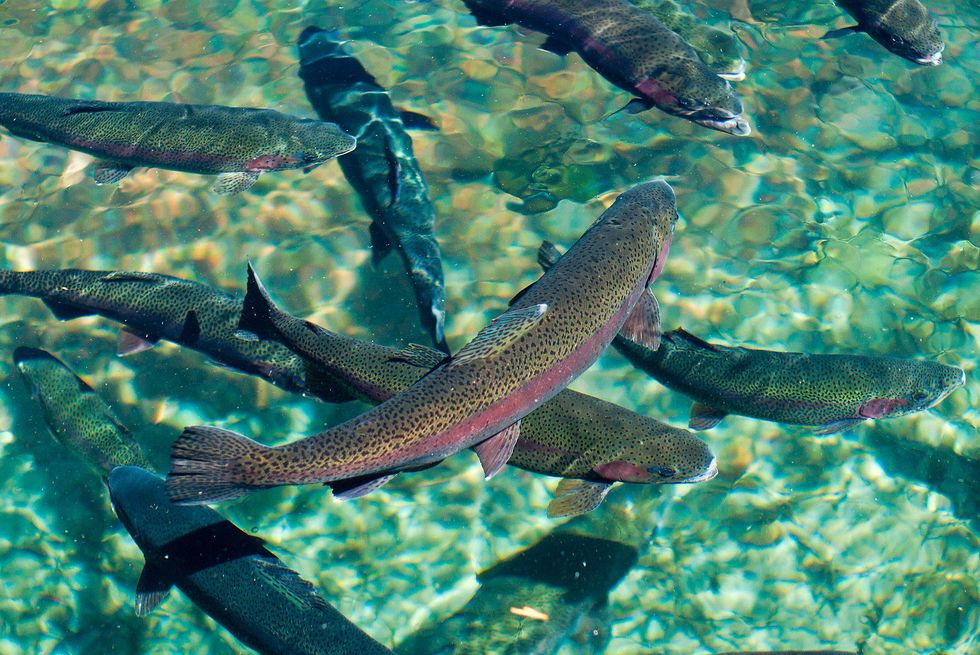
Laboratory studies show that current formulations of Phos-Chek are potentially deadly to rainbow trout. (Credit: Paul Bausch/flickr)
Other aquatic species can also be affected by retardant, though less severely than fish. The NMFS identified insects, like mayflies, and crustaceans, including crayfish, as among the species vulnerable to the ammonia in retardant, and concluded that this could affect the food supply for fish. The Forest Service additionally identified several threatened and endangered amphibians, such as the arroyo toad and California red-legged frog, at risk of injury or death from direct and indirect exposure to retardant drops.
Additionally, the fertilizer component of retardant, namely phosphorus, stimulates algae growth and contributes to algal blooms on waterways, which reduce oxygen and can kill aquatic life.
Some algal blooms, caused by cyanobacteria that produce a toxic scum, are also dangerous to humans — particularly children — and animals if ingested. These harmful algal blooms can affect water quality in streams and lakes, as well as impact drinking water systems. Scientists from the USGS are currently investigating whether and to what extent wildfire retardants may affect water quality in California reservoirs operated by the Bureau of Reclamation.
In addition to toxicity testing on different species, firefighting agencies also need a more precise understanding of how retardant moves through waterways and disperses. U.S. Geological Survey (USGS) scientists developed a new model to help the Forest Service more accurately assess how stream dynamics affect retardant dilution and make it less toxic over time.
"It's a modeling tool that the fisheries biologist on the ground can use," Shirley Zylstra, the supervisory program leader for Wildland Fire Chemical Systems, told EHN. "If we get retardant into a waterway, it will give them some idea of how far downstream they might need to be looking for potential impacts."
The model indicated that fish would likely be exposed to retardant for shorter periods of time than the standard 96-hour lab testing, and that concentrations were likely to fluctuate after the retardant hit the water. That raises other questions about how much retardant fish encounter, at what concentrations, and for how long.
Wildfire retardants and human health
While generally deemed safe for people, Phos-Chek comes with a caution that the retardant should not be ingested and that it may be a skin, eye, and respiratory irritant. This presents challenges not only to firefighters, but to farm workers and residents of communities where fire retardant may have hit crops, homes, and gardens.
Also, the retardants can mix with wildfire smoke, which itself can be toxic because of the complex mixtures of gases, particulates, and chemicals it already contains when things like plastics, batteries, furniture, and household and industrial chemicals burn.
As bigger, more intense fires push into the wildland-urban interface and fire crews battle to protect towns and agricultural areas, new questions are emerging about what happens when aerial wildfire retardants become a larger part of the chemical cocktail in wildfire smoke.
In 2017, University of California Davis graduate students and researchers conducted a literature review of health effects associated with wildfire retardants and pesticides. Their conclusion: The existing research was scarce. "Future epidemiological studies that characterize the health impacts of wildfire smoke in California should consider the interaction between retardant use and smoke generation in small, urban wildfires" where retardants tend to be a bigger generator and component of smoke, they wrote.
"As we have this greater frequency of wildfires, we're going to see more and more fire retardant applied, and then we need to really better understand what the potential health implications may be there," Kent Pinkerton, who directs the Western Center for Agricultural Health and Safety at UC Davis and who guided the students conducting the review, told EHN.
Alternative ways to protect communities from wildfires
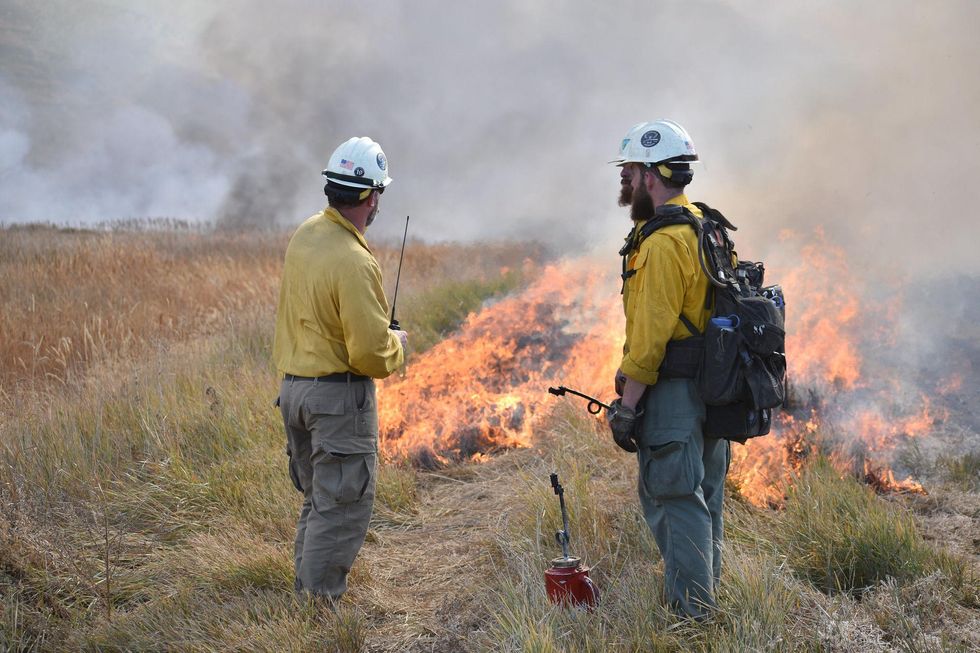
Firefighters with the Bureau of Land Management conduct a controlled burn on the Warner Wetlands in south-central Oregon. (Credit: Bureau of Land Management Oregon and Washington)
Tim Ingalsbee, a fire ecologist and former wildland firefighter, directs the nonprofit Firefighters United for Safety, Ethics, & Ecology and believes, like Stahl, that state and federal fire agencies should be more restrained and targeted in their use of retardant.
"The price of just one air tanker load of retardant can fund so many more workers [on the ground]," he told EHN. "They're much more flexible and nimble and versatile than that air tanker, which has one single function."
In an email statement, the Forest Service reiterated that wildland fire retardant is safe and effective, allowing firefighters on the ground to employ additional means of suppressing fire and offering support in areas where steep terrain prevents access by ground crews. "No two wildfires are the same and thus it's critical for fire managers to have different tools available to them for different circumstances a fire may present. Fire retardant is simply one of those tools."
Related: Hands on the land, heart in community: Returning cultural fires
Ingalsbee thinks aerial retardant is used wastefully, and that resources would be better directed to proactive fire management strategies like prescribed burns, ecological forest management, and getting more firefighters on the ground. He and Stahl agree that firefighting agencies should concentrate more on fireproofing homes and creating defensible space so that fires can simply burn around communities. That means clearing flammable vegetation within 50 feet of homes and investing in construction materials — like concrete siding and non-flammable roofing and shutters that protect homes against flying embers.
The challenges go far beyond wildfire retardants, said Dan Turner, a retired Cal Fire chief who leads a new center at the California State Polytechnic University in San Luis Obispo that seeks more holistic approaches to fire management. The Wildland-Urban Interface Fire Institute is the first center to explore how communities can live with the risks of extreme fires by combining innovative city and regional planning, construction and design technologies, and best practices for fire safety and ecology.
"How do we design city and regional planning? How do we design communities of the future so they're designed with fire resiliency in mind? The layout of the community, the infrastructure, the transportation network, evacuation planning — all of those things make the community more resilient to the impacts of fire," Turner told EHN.
Banner photo: A Coulson C-130 sprays fire retardant ahead of the leading edge of the Thomas Fire, Dec. 13, 2017. (Credit: Airman Magazine/flickr)

